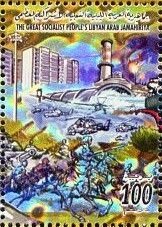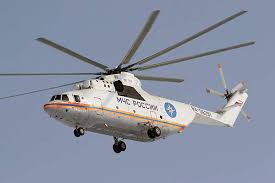Stamp: Buildings, water pipeline, helicopters, tank, horsemen (Libya 2001)
Buildings, water pipeline, helicopters, tank, horsemen (Libya 2001)
01 September (Libya ) within release Buildings, water pipeline, helicopters, tank, horsemen goes into circulation Stamp Buildings, water pipeline, helicopters, tank, horsemen face value 100 Libyan dirham
| Stamp Buildings, water pipeline, helicopters, tank, horsemen in catalogues | |
|---|---|
| Michel: | Mi: LY 2784II |
Stamp is square format.
Also in the issue Buildings, water pipeline, helicopters, tank, horsemen:
- Stamp - Buildings, water pipeline, helicopters, tank, horsemen face value 100;
- Stamp - Buildings, water pipeline, helicopters, tank, horsemen face value 100;
Stamp Buildings, water pipeline, helicopters, tank, horsemen it reflects the thematic directions:
A building or edifice is a structure with a roof and walls standing more or less permanently in one place, such as a house or factory. Buildings come in a variety of sizes, shapes and functions, and have been adapted throughout history for a wide number of factors, from building materials available, to weather conditions, to land prices, ground conditions, specific uses and aesthetic reasons. Buildings serve several needs of society – primarily as shelter from weather, security, living space, privacy, to store belongings, and to comfortably live and work. A building as a shelter represents a physical division of the human habitat (a place of comfort and safety) and the outside (a place that at times may be harsh and harmful).
A helicopter is a type of rotorcraft in which lift and thrust are supplied by horizontally spinning rotors. This allows the helicopter to take off and land vertically, to hover, and to fly forward, backward and laterally. These attributes allow helicopters to be used in congested or isolated areas where fixed-wing aircraft and many forms of short take-off and landing (STOL) or short take-off and vertical landing (STOVL) aircraft cannot perform without a runway.
The horse (Equus ferus caballus) is one of two extant subspecies of Equus ferus. It is an odd-toed ungulate mammal belonging to the taxonomic family Equidae. The horse has evolved over the past 45 to 55 million years from a small multi-toed creature, Eohippus, into the large, single-toed animal of today. Humans began to domesticate horses around 4000 BC, and their domestication is believed to have been widespread by 3000 BC. Horses in the subspecies caballus are domesticated, although some domesticated populations live in the wild as feral horses. These feral populations are not true wild horses, as this term is used to describe horses that have never been domesticated, such as the endangered Przewalski's horse, a separate subspecies, and the only remaining true wild horse. There is an extensive, specialized vocabulary used to describe equine-related concepts, covering everything from anatomy to life stages, size, colors, markings, breeds, locomotion, and behavior.



